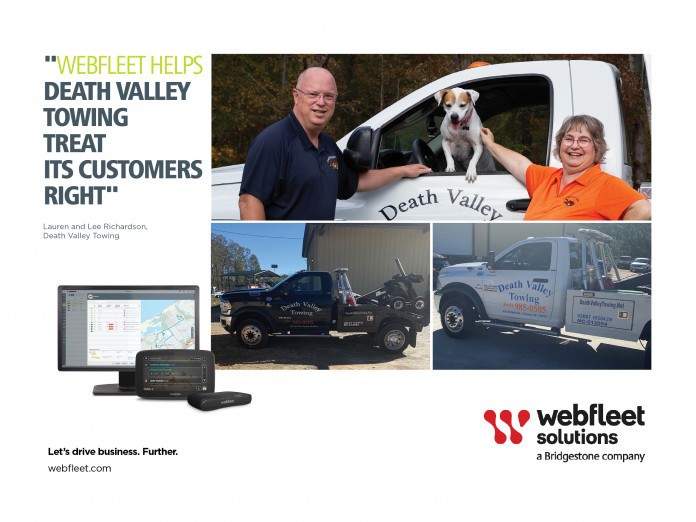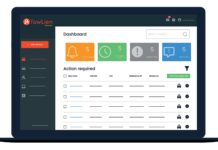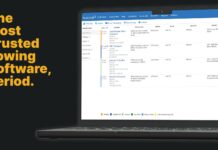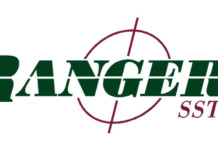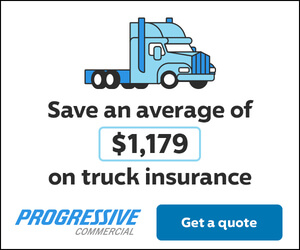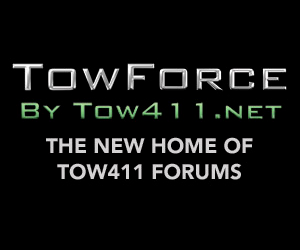Death Valley Towing business started 33 years ago as an offshoot of Death Valley Exxon. What began as a side business grew exponentially into a robust, full-time operation, and today the company provides aid to stranded motorists, support to property managers and law enforcement, local garages, insurance companies, and auto clubs serving the city of Seneca, South Carolina and visiting students who attend nearby Clemson University.
Four years ago, Death Valley’s original owner retired, passing the reins of the towing business on to former business executives Lee and Lauren Richardson. Under Lee and Lauren’s modern-style leadership, Death Valley Towing has gone to the next level of business maturity; adopting some of the best and most progressive equipment and systems in the towing industry to support its team of seven drivers and five light-duty vehicles.
From ancient business practices to a technologically advanced towing operation
“When we purchased Death Valley Towing, the operation was using ancient business practices. There was no technology. Drivers took pictures of towed vehicles with a physical camera and were dispatched and managed using clipboards and three-part forms. It was easy to lose information. Easy for drivers to pull a fast one. Easy for people whose cars were towed to challenge you. We looked at this messy, dark ages business and said, ‘there has to be a better way,’” says Lauren.
The first technology investment Lauren and Lee made was in tow management software provider Omadi to digitize Death Valley’s dispatch and administration processes. With that platform in place, Lauren began to build on that foundation. This year, they invested in WEBFLEET to more efficiently manage, deploy and track their fleet of drivers and vehicles.
“There’s nothing more disconcerting than looking at the map and seeing your driver in the middle of the lake when he should be on the road,” chuckles Lauren. “WEBFLEET gives us precise information on vehicle and driver location. It helps keep everyone honest.”
In addition to installing WEBFLEET on their vehicles, she also agreed to pilot a new integration with HAAS Alert’s collision prevention service Safety Cloud®, which broadcasts a ‘slow down move over’ alert to surrounding vehicles when a tower stops on the side of the road to assist a stranded driver. On-the-job fatality risks in the tow truck industry are nearly 15X greater than other industries with one tower killed every six days according to the AAA. Safety Cloud activates when the PTO is engaged on Death Valley’s trucks and sends out a warning to surrounding drivers using the navigation app to slow down and move over. It’s the same alert system fire departments across the United States use to prevent crashes involving fire trucks rushing to an emergency scene.
While Lauren quickly agreed to the opportunity to try Safety Cloud on her vehicles, and well understood the risks towers face on the road, the weight of her decision to move forward with the service hit home only a few days later.
Lauren and Lee received the tragic news that the son-in-law of a fellow tower had been killed while providing roadside assistance in the middle of the night to a stranded driver. The young man, a new father was the victim of a hit and run. “All of a sudden, our decision to use the HAAS roadside alerts got very real for us,” said Lauren. “I recall saying to my WEBFLEET sales rep, we need to make sure this doesn’t happen to anyone else,” says Lauren.
A level of service beyond what people expect from a tower
The combination of Omadi, WEBFLEET and Safety Cloud has improved Death Valley’s transparency and service. This helps the business achieve a level of excellence and professional performance from its employees, and honor its commitment to ‘treat its customers right.’
“We’re a university town,” explains Lauren. “We have children here from all over the country, and naturally, parents worry. It is a tremendous comfort to the parents for us to say, ‘I can see a driver pulling up alongside your daughter’s vehicle on the road. I can see him pulling out of the driveway. That is a different level of service than most people are accustomed to from towing companies.”
As part of Death Valley’s services to the university community, they issue parking permits and regularly patrol and monitor parking lots. With WEBFLEET Lauren can provide photo evidence documenting a parking infraction, and if a car is towed in the middle of the night, she has a photo documenting the infraction and data to demonstrate to property managers that Death Valley is indeed patrolling the lot as expected. Property management clients can even log into Death Valley’s systems to see what’s been towed, where the driver is located, and when PTO was engaged.
Technology has also improved Death Valley’s policing relationships. Says Lauren, “We typically have a 20-minute window with law enforcement to respond to a call. With precision fleet tracking from WEBFLEET, we can tell them precisely where our driver is and provide an accurate ETA to the scene. We also give police a window into our Omadi system so it’s dramatically cut down on the number of phone calls back and forth. Because of the transparency we offer, they’ve been able to eliminate an entire shift during football weekends.”
Better tools to manage a young fleet of drivers
More than half of Death Valley’s drivers are under the age of 30. It’s been the business’ philosophy to hire aspiring drivers and teach them what they need to know. But that means keeping a watchful eye on their driving behaviors.
Using WEBFLEET’s Opti-Drive 360 capability, she can pinpoint a driver’s location and monitor their speed and detect any aggressive driving such as harsh braking or cornering. “Clemson is too small a town. If our drivers are behaving inappropriately someone is going to notice and call. We have a very good community reputation to uphold. Using WEBFLEET to monitor our drivers’ speed and aggressive driving means I can intervene first and coach them appropriately.
And, Lauren says with a smile, “I can be assured they are out on the roads patrolling and not heading to the lake to fish.”
Learn more about the benefits of WEBFLEET at webfleet.com

